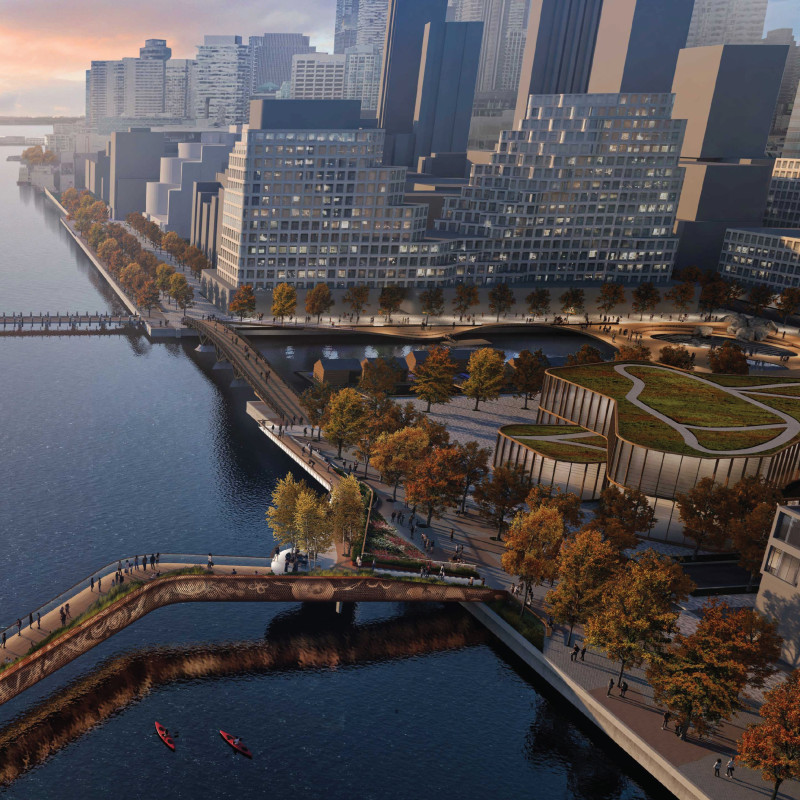5 key facts about this project
A defining feature of the project is its thoughtful approach to materiality. The design utilizes a mix of concrete, glass, and timber, creating a dialogue between the urban environment and the natural surroundings. Concrete is employed for its structural integrity and ability to withstand the elements, while large glass panels allow for ample natural light. This not only reduces reliance on artificial lighting but also fosters a connection with the outdoor landscape. Timber elements introduce warmth and texture, balancing the cooler tones of the concrete and glass. The choice of materials is significant as it reflects a philosophy of sustainability and aesthetic harmony, reinforcing the role of architecture in ecological consciousness.
The layout of the project is designed with both functionality and flow in mind. Open floor plans feature prominently, creating spacious interiors that encourage movement and interaction. Rooms are strategically positioned to maximize views and sunlight, enhancing the living experience. Each space is oriented in relation to its environment, allowing for cross-ventilation and minimizing the need for mechanical heating and cooling systems. These design considerations showcase a clear understanding of the importance of environmental factors in architectural design.
The project also highlights unique design approaches, particularly in its use of outdoor spaces. Balconies and terraces are seamlessly integrated into the design, allowing occupants to step outside from their private areas, thereby promoting outdoor living. The incorporation of green roofs serves a dual purpose: it adds to the aesthetic of the building while aiding in stormwater management and providing insulation. This innovative merging of indoor and outdoor spaces exemplifies a modern take on living, where nature is not merely an external element but a central aspect of the architectural expression.
Furthermore, the project’s commitment to promoting community engagement is notable. Public spaces are created within the building, serving as gathering areas for residents and visitors alike. These communal spaces encourage social interaction and foster a sense of belonging among occupants. The integration of such areas reflects a broader understanding of architecture, one that emphasizes the importance of relationships and community dynamics.
In evaluating the design outcomes, one sees that the project excels in balancing aesthetic appeal with practicality. The integration of sustainable designs alongside innovative use of materials and spaces creates a harmonious living environment. The project stands as a testament to the evolving nature of architecture in urban contexts, where the challenges of modern living are met with thoughtful design solutions.
For those interested in delving deeper into this architectural project, exploring the architectural plans, sections, and concepts will provide valuable insight into the intricacies of the design. This project encapsulates the intersection of functionality, sustainability, and community, representing a forward-thinking approach to architecture. Engaging with these elements will enrich one’s understanding of contemporary architectural ideas and inspire further exploration of innovative design practices.


 Chae Yeon Woo
Chae Yeon Woo 




















